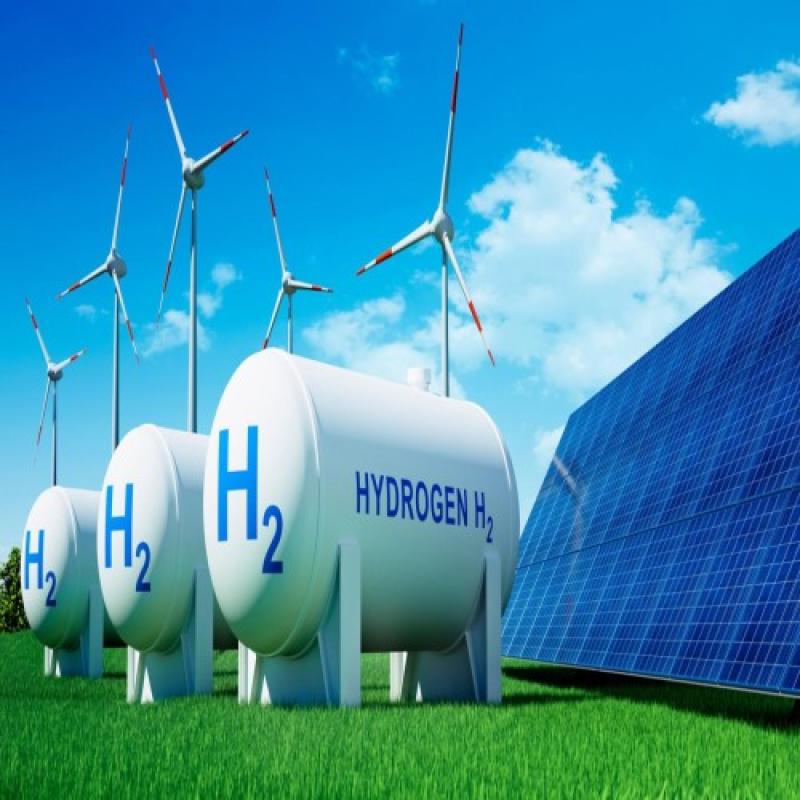What is Hydrogen?
It is the most abundant chemical element in the universe. It has the chemical symbol H and an atomic number of 1. On Earth, it is found combined with oxygen in water and other substances like organic matter. It can be produced using various production methods like steam reforming of natural gas, electrolysis of water, and gasification of coal or biomass. It has a very high energy content by weight but a low energy content by volume.
Methods of Production
Steam Methane Reforming
Hydrogen steam methane reforming is currently the dominant and most economical method for producing it on an industrial scale. It involves high-temperature steam reacting with natural gas to produce hydrogen, carbon monoxide, and carbon dioxide. Though energy-intensive, it is a mature and scalable technology.
Electrolysis of Water
Water electrolysis uses electricity to split water into its constituent hydrogen and oxygen through the process of electrolysis. It is a renewable way of producing it if powered by renewable energy sources like solar, wind, hydro or nuclear power. Alkaline electrolysis and proton exchange membrane electrolysis are the two main commercially used electrolytic processes.
Gasification of Coal or Biomass
Gasification converts coal, biomass or other carbonaceous feedstocks into a syngas mixture through partial oxidation, consisting mainly of carbon monoxide and hydrogen. The gas mixture can then be further processed to increase the content and remove impurities. Coal gasification has significant carbon emissions but biomass gasification is considered carbon neutral.
Applications
Chemical Industry
It is used as a chemical feedstock for various industrial processes such as production of ammonia for fertilizers and methanol for plastics, chemicals and fuels. It is also used in refinery operations like hydrocracking to produce lower molecular weight hydrocarbons from heavier oil fractions. The chemical sector accounts for around half of global consumption currently.
Oil Refining
It is utilized both as a chemical reagent and as a physical parameter to reduce sulfur, aromatics and other contaminants in petroleum during oil refining processes like hydrocracking and hydrotreating. It helps refine crude oil and its fractions into cleaner burning fuels and fuel additives.
Transportation
Fuel cell vehicles powered by its fuel cells are considered zero-emission vehicles as they only emit water vapor. Major automakers are developing FCV models and ramping up it refueling infrastructure. It is also a promising solution to decarbonize heavy-duty transportation through fuel cell buses, trucks and trains.
Emerging Opportunities
Renewable Power Generation
It can act as an energy carrier, a storage medium and a flexible fuel. It enables longer term storage of renewable energy which complements the intermittent nature of many renewable sources. It produced from solar and wind energy during periods of excess supply can be used in fuel cells for power generation when demand is high.
Industrial Heat Production
Large amounts of heat in the range of 500–1000°C are required in various industries like steel, cement and glass production. Producing this heat from hydrogen combustion offers a clean alternative to fossil fuels currently used. Trials are underway to retrofit existing natural gas burners with it.
Residential and Commercial Heating
Blending it into natural gas networks or supplying homes with standalone hydrogen infrastructure could help decarbonize heating applications in households, commercial buildings, and district heating systems. Fuel cells also offer highly efficient on-site heating options.
With worldwide initiatives to achieve net-zero emissions targets, investment in its economy is growing rapidly. Production costs are falling steadily with technological advancements and economies of scale. As renewable energy capacities increase globally, so will opportunities to produce clean hydrogen profitably. Mass adoption of fuel cell vehicles and integration of it into various sectors will require coordinated efforts across supply, distribution and end-use infrastructure development. With the right policy push and continued progress, it is poised to play a major role in achieving climate change mitigation and energy security goals in the coming decades.
For Deeper Insights, Find the Report in the Language that You want.
About Author:
Ravina Pandya, Content Writer, has a strong foothold in the market research industry. She specializes in writing well-researched articles from different industries, including food and beverages, information and technology, healthcare, chemical and materials, etc. (https://www.linkedin.com/in/ravina-pandya-1a3984191)
